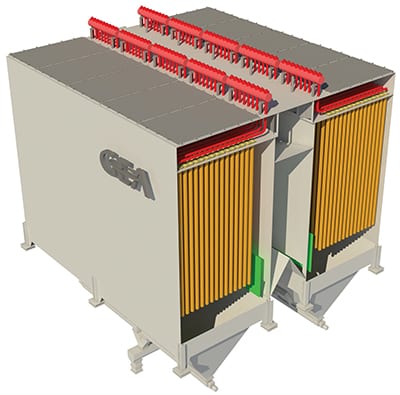These ceramic filters have catalysts built-in

GEA
The BisCat filter system (photo) combines the three process stages of de-dusting, separation of acid components and reduction of total hydrocarbons and oxides of nitrogen (NOx) in one unit. The system uses high-temperature filters with ceramic elements that enable the removal of NOx, dioxins, mercury and volatile organic compounds (VOCs) through an integrated catalyst matrix. BisCat ceramic catalyst filters are chemically inert and corrosion-resistant. Particle separation takes place with the aid of filter elements made of mineral fibers. These ceramic candles are well proven and very flexible to use, even with regard to modifications of operating parameters, especially at high gas temperatures. No cooling of fluegases is required and no thermal energy is wasted. Filter elements are cleaned of separated dust online during operation by means of separate, compressed-air-jet pulses. The single or multi-sectional housings allow a maximum filter length of 6 m. This means that even large gas-volume flows can be cleaned. By injecting lime-based reagents, inorganic pollutants, such as HF, HCl and SOx, can also be absorbed. Applications include the cement and glass industries, incinerators, refineries and roasters. — GEA, Düsseldorf, Germany